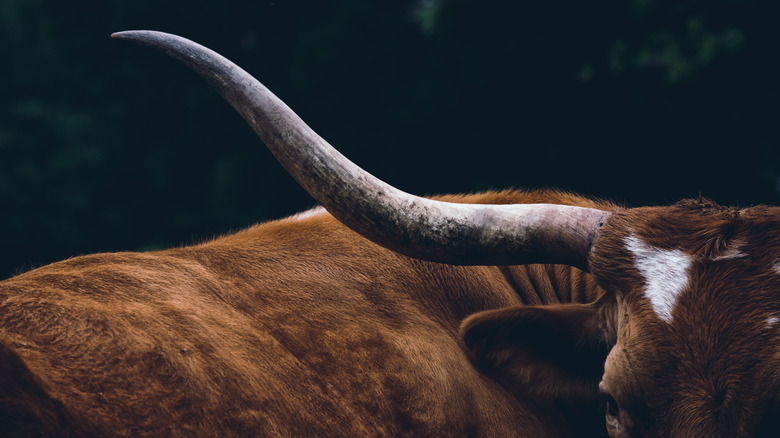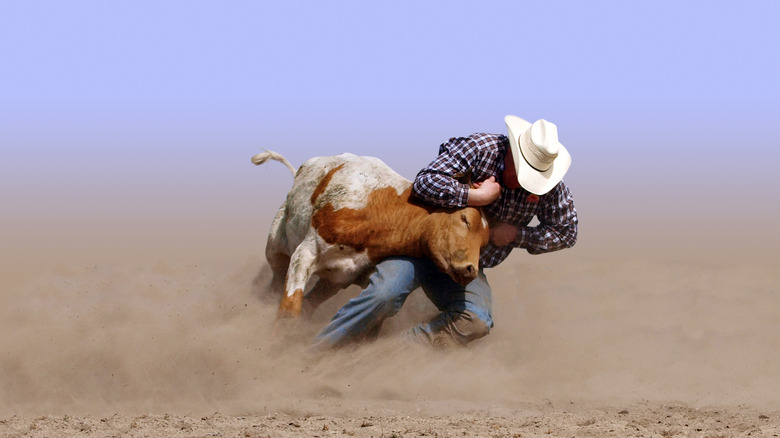Longhorn Cattle Almost Went Extinct. Here's How The Breed Was Saved
Known for their unique horns that can span as much as 10 feet wide (via Guinness World Records), longhorn cattle were created as the hybrid result of breeding English and Spanish cows, brought to Texas by frontiersmen in the 1820s and associated with the state ever since (from Texas State Historical Association). The mascot of the University of Texas since 1917, "BEVO" the bull just might be the most famous longhorn cow in history — though his breed wasn't always destined for success (via University of Texas). In fact, this now-treasured cow was once almost entirely eradicated due to negligent crossbreeding practices. By the 1920s, all but a handful of longhorn cattle had been crossed with other breeds like Herefords and shorthorn Durhams in order to create the ideal beef animal, setting the true longhorn on the path toward extinction (from Texas State Historical Association).
Bred from Spanish cows Christopher Columbus introduced to the Americas, per NPR, roaming wild until they were crossed with English cattle, the longhorn has long been prized for its resilient nature (via Science Daily) and its ability to put on weight while grazing on the free grass of the open range (via NPR). Long associated with the American cowboy for its free-range lifestyle, the introduction of barbed wire fencing in the late 1800s changed the game for ranchers (via Texas State Historical Association) and, coupled with the crossbreeding of fattier, well-marbled beef cattle, sparked the beginning of a downturn in the breed's popularity.
How Texas longhorns made a comeback
Thankfully, there is a lot to love about this iconic cow — and in 1927, the United States government took action to preserve the species as a living component of American heritage (via Texas Longhorn Breeders Association of America). Thanks to the efforts of forest service men like Will C. Barnes, the remaining Texas longhorns were gathered up and sent to protected areas, beginning in the Wichita Mountains Wildlife Refuge of Oklahoma. Since then, the Texas State Historical Association shares, ranchers have rediscovered the breed's inherent fertility, disease resistance, heartiness and life span, calving ability, and minimal feeding needs, creating a resurgence in their popularity that brought their numbers from a mere 1,500 or less to over 330,000 longhorns (from NPR).
Today, longhorn cattle is celebrated across the globe for its flavorful, lean meat, which contains less cholesterol than chicken and less saturated fat than other breeds (via Texas Longhorns Australia, Inc.). According to Mike Bowman, a longhorn rancher in Denton, Kansas interviewed by NPR, while the breed still offers fine beef, nowadays they are largely looked at as "yard art." Bowman says of his endeavors at End of the Trail Ranch, "I never dreamed when I started this that I would ever sell a [Texas longhorn] heifer for $150,000. Pretty amazing."

